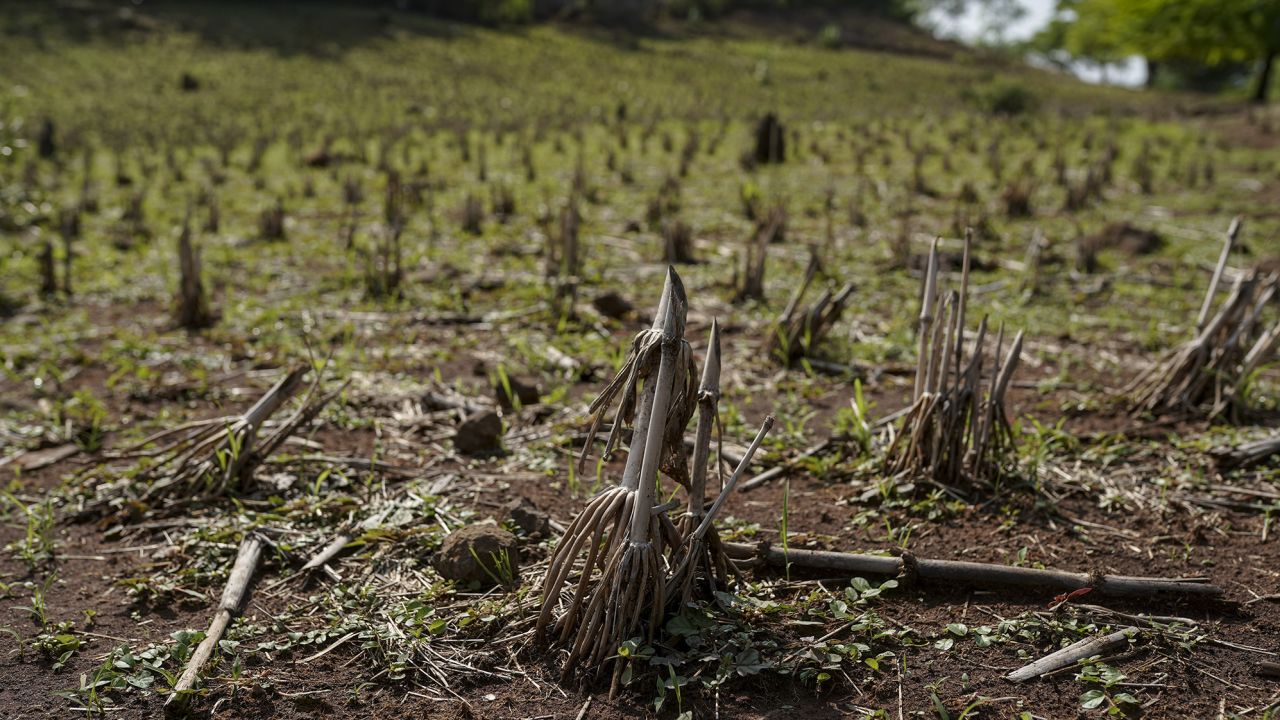CNN
—
Earlier this month, scientists at the US National Oceanic and Atmospheric Administration (NOAA) confirmed that the climate event known as El Niño has officially emerged for the first time in more than four years, and it’s expected to be strong this time around.
The phenomenon generally has a wide-ranging impact on weather conditions for 9-12 months. But that’s not the only effects expected: Combined with climate change, El Niño this year could dent US economic growth, potentially impacting everything from food prices to the winter clothing sales.
“There are these major negative economic growth consequences where there’s extreme weather,” said Christopher Callahan, a Ph.D. candidate at Dartmouth and lead author on a study in the journal Science attributing $5.7 trillion in global income losses to the 1997-98 El Niño and $4.1 trillion in losses to the 1982-1983 El Niño.
Countries can feel the negative affects of these climate patterns years after they end, the study found.
“The effects of these events last a long time, and they are far more costly than we used to think,” Christopher Callahan, a Ph.D. candidate at Dartmouth and lead author of the study, said.
El Niño, part of a larger pattern called the El Niño-Southern Oscillation (ENSO), is a naturally occurring climate system marked by warmer-than-average sea surface temperatures in the Pacific Ocean near the equator, and it appears every 2-7 years, according to NOAA.
That can result in more typhoons and cyclones in the Pacific, said Lesley-Ann Dupigny-Giroux, a professor at the University of Vermont who studies climate variability and change. And, because weather systems are complex, that can also suppress hurricane activity in the Atlantic, she noted.
But El Niño’s potentially dramatic impact stretches far beyond the Pacific Ocean. Jin-Yi Yu, a professor of atmospheric sciences at the University of California Irvine, said the climate pattern usually results in “abnormal” weather patterns, including droughts in typically rainy southeast Asia and Australia, and rainfall in the normally arid deserts of the Southwestern United States.
The climate event’s impact will become more apparent in the US by late fall: Winters are generally warmer in the north of the United States and colder and rainier in the south during El Niño, Yu said.
Callahan said extreme weather associated with El Niño causes flooding, wildfires, hurricanes and other natural disasters.
That could affect prices for foods Americans eat every day: Futures in sugar and cocoa are trading at multi-year highs on predictions of shortages, while robusta coffee futures are trading at all-time highs. That can translate into higher prices for chocolate, for coffee and more. Higher food prices are a common theme across El Niño events, according to a recent Deutsche Bank report.
The effects go beyond farms. Simeon Siegel, an analyst analyst at BMO Capital Markets, said unexpected swings in weather can negatively impact the retail sector.
“Although no retailer ever wants to blame the weather because it comes off as an excuse, weather is absolutely critical for most retail, particularly apparel and seasonal goods,” he said.
“Not only must the retailers or brands forecast what consumers will want, they also need to predict what nature is going to throw at them. Obviously, for companies that sell coats, grills, outdoor furniture, sweaters, or shorts, the weather can be the difference between needing to buy that coat or not,” he added.
The travel and tourism sector may also feel the sting of El Niño. For a 2021 study in the scientific journal Atmosphere, researchers analyzed the number of visits to 48 natural attractions in the United States to test willingness to travel during El Niño events. The research concluded that these weather events led to a “significant decrease” in tourist visits.
El Niño conditions also tend to amplify hurricane-like storms in the Pacific Ocean, according to Dupigny-Giroux.
In fact, according to the Deutsche Bank report, “The Pacific hurricane season saw 16 hurricanes in each of 2014 and 2015, the joint highest number on record.”
A repeat could prove to be a headache for airline companies, which are already struggling with weather-related cancellations and disruptions this summer. Inclement weather is “by far, the largest cause of flight delays,” according to the US Federal Aviation Administration.
However, El Niño could bring benefits to some areas.
Chris Scheuring, a water attorney for the California Farm Bureau, said his state would welcome a rainy season after battling years-long droughts in the past.
“A wet year in general on this landscape is very good. The reservoirs refill themselves, the aquifers bounce back a little bit, and the snowpack is great. That’s a very good thing,” he said.
“It’s almost always a good thing for farming, except for those folks that suffer flood-related impacts,” he added.

To be sure, not every El Niño is guaranteed to significantly impact the weather, according to Dupigny-Giroux. “Everything is looking like we will go into at least a weak or moderately strong one, but no one is hanging their hat to say it’s a guarantee right now,” she said.
The last time there was an El Niño in 2018 through 2019, NOAA dubbed it “The Great Puny El Niño” due to its relatively weak impact on weather conditions.
However, NOAA’s Climate Prediction Center recently said there were “pretty good” odds that this El Niño event will strengthen at its peak, and Dupigny-Giroux said climate change may intensify some of the resulting weather events.
“A lot of times when you hear the term climate change, you think about air temperatures, but for these types of systems, ocean temperatures are critically important, and additional warming in the air is actually being stored in the oceans,” she said.
“That means the oceans are going to be warmer, which then allow for more potential storm systems to occur.”
Callahan’s research for Dartmouth estimates that amplified El Niño patterns could produce “potentially devastating socioeconomic impacts” in the coming decades. He projects that El Niño weather events could cause $84 trillion in economic losses in the 21st century.